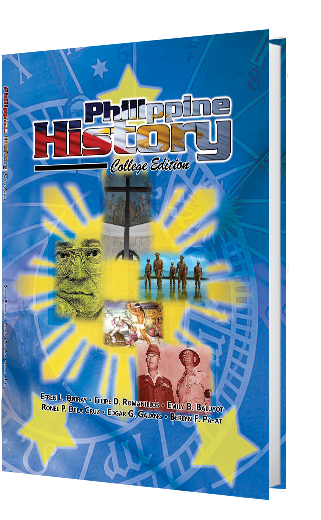Philippine History (BLUE)
Authors: Efren L. Quiray, Felipe D. Romanillos, Emily B. Baluyot, Ronel P. Dela Cruz, Edgar G. Galang, Berlyn F. PA-AT
Re-creating or putting fresh life into a story is a new way of looking at the established history. Human history must not be told like a dead thing. It must be narrated with life so that learning will be interesting. Further, it must not be viewed from one angle only It must be examined from different perspectives with life. There is emotion, truth, and action. Hence, the application of outcomes-based teaching and learning or OBTL approach in teaching Philippine History is suggested. This is a departure from the usual narrate-listen approach. In OBTL, the students are not just observers or listeners but they are actors themselves. The students will have a chance to play the roles of heroes or historical personages long dead in the past.
The usual story about Bonifacio, for instance, is repeatedly told in our history books without considering other angles and possibilities of the events surrounding his lifetime that led to his tragic end. The pattern is one-dimensional so that other facets of his life are not included as part of his history. From this old pattern, this new shift of re-creating or putting fresh life into the story• of Bonifacio and the Katipunan is introduced as a new direct operating system — from the locked type of learning to democratic type. Here, other possibilities of learning are applied to give students freedom to think and present new perspectives.
Why should we use this new approach? If our history were written alive, reading it would be interesting. The story about our heroes' fight for freedom must be made easy to read by the students. One way of doing this is putting fresh life into their stories. The significant achievements of our heroes such as Rizal, Bonificio, and many others must be portrayed with touch, sight, taste, hearing, and feeling. This will make written history more Pilipino that could show settings common to our racial and geographical bond. Thus, the meaning of our heroes' fight for freedom will be set vividly in the students' minds and hearts.




